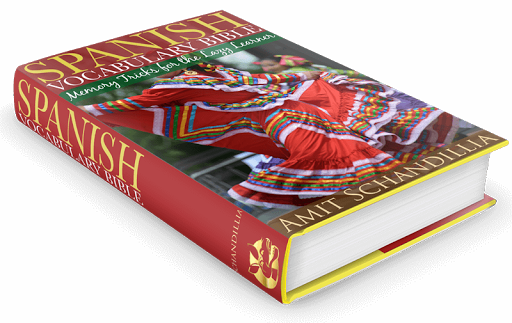Ever since we started learning a language that was not our own (English for most of us), we have been wired with the idea that grammar is the start and end of learning a language. Let us shock you now with an assertion: This is precisely the opposite of what really is. Yes, it is possible to get fluent in any human language, let alone Spanish, while never turning a single page of that grammar book! To shock you even further, learning a language without touching grammar is a more efficient and quicker way and the only natural way of doing it. And we are not even the first ones laying this claim. This assertion is backed by rock-solid linguistic research and results experienced by established polyglots all over the world learning all kinds of language.
An example from my life
So, back to learning Spanish. Where do we start if not with grammar? The most efficient idea, which we will be harping on shamelessly throughout our conversation, is to doggedly focus on absorbing the language to the point of saturation to begin with. Note that this article prefer using the word, “absorbing” instead of “learning” when it comes to Spanish, or any language for that matter. There’s a massive difference.
Learning is what I did with Sanskrit when I was in high school. Did I like Sanskrit? Hell, no! But I had to learn out of compulsion. And I did! Crammed up every single word in the ugly little textbook and all the complex case-tables mandated by the Sanskrit grammar and actually scored good grades on my tests. In fact, when it came to tests, I fared better in Sanskrit than in English or even my mother tongue, Hindi! But, was it any useful? No. I was never able to have a 30-second elevator chat with someone in Sanskrit while I could rattle off in English or Hindi for hours at a stretch.
 |
| The silent-period is a wonder-drug for fluent Spanish! Photo credit: Knight Foundation licensed CC BY-SA 2.0 |
Silent-period
We all know and have been told countless times that absorption is how we acquired our mother tongue and hence it is the most natural methodology. Putting it in practice for a second language like Spanish, however, gets more radical. The idea is to not attempt to speak a word of Spanish nor read any grammar for a pretty long time. Some call this the “silent period”. During this silent period, all efforts must be invested in listening. Listen to Spanish. Authentic Spanish. As much as possible. Watch telenovelas, listen to podcasts, listen to Spanish music, watch Spanish movies...just listen incessantly. Only when the time is right, should you consider producing some Spanish.
Break your silence when the time is right
The obvious next question would be, when? Well, when the time is right, you just know it. Think of it as an extremely annoying and ubiquitous TV commercial. Your guts hate that commercial and the moment it comes on TV, you curse under your breath. But just because it’s being shown over and over again, day in and day out, did you notice something? It started growing on you! Ever found yourself subconsciously humming the jingle in your shower or while you are cooking? That’s the power of your subconscious. You absorbed that commercial. The words, the sentence structures, the patterns, the intonation, everything. And, only when you are saturated, does it become your second nature to reproduce the sounds you absorbed and you start humming them unknowingly.
It’s the same with Spanish. When you are too loaded, you will start producing automatically. Not only will you start speaking spontaneously, but you’ll also start developing an ear for what word combination or pattern sounds right and what just doesn’t. All this when you haven’t started studying the rules governing the sentence structures in Spanish! In other words, you will recognize the very signature of Spanish and this is all it takes for you to be eventually fluent like the natives. Call it overkill if you will, but if it worked for me, I am sure it will for you too.
And when is that?
So again, when is the right time? Some say it’s 10,000 hours while some say it’s 800. The numbers would largely depend on your individual knack and environment and our advice would be to steer clear of any number written-in-stone. There’s no magic count at which you’ll suddenly start rattling in Spanish like a native speaker. This is, instead, a very personal and subjective concept. As a thumb-rule, we would still recommend no less than 500 hours of silent period before you even think of taking the plunge.
Again, what is immensely important is that these 500 hours must be evenly spaced out and must be consistent over a period of time. What is meant is that if you spend 8 hours watching telenovelas on the first day and then only 30 minutes the next day and skip it completely on the third day, don’t expect any miracles. It’s better, instead, to spend an equal amount of time, even it it’s as little as only 2 hours, every day without any compromise whatsoever until you hit the 500-hour mark (or 800 or 1,000).
Oh, and before we forget grammar, do use it. But only as a reference to understand anything that confuses you, not as a homework. Our suggestion, start using grammar only after you are comfortable conversant in Spanish, only in order to polish and buff-up your language skills. Isn’t this what you did to your native lingo anyways? You were already fluent in your mother tongue way before you were taught the first grammar rule for that language. Remember the same for Spanish and you should be able to fool the natives with your accent in no time.



.png)